It is a salutary thought that of all the artists whose work has sold at auction for around $50m or more, only three predate Monet. This triumvirate comprises Raphael, Rubens and Turner. After finding an auction record of £30.3m in 2014 for the latter’s Rome, from Mount Aventine (1835), Sotheby’s London now offers another late work painted in the same year, Ehrenbreitstein. As the painting’s full title makes abundantly clear, this is more than a picturesque view of a Rhineland fortress atop a rocky crag.
Ehrenbreitstein, or The Bright Stone of Honour and the Tomb of Marceau, from Byron’s Childe Harold, represents the stone obelisk near Koblenz that forms the monument to the young French revolutionary hero, General François-Sévérin Marceau-Desgraviers, whose bravery in battle prompted a delegation from the opposing Austrian forces to join with the French in honouring him. For Byron, the poem Childe Harold’s Pilgrimage reflected the sense of melancholy and disillusionment felt by many in the aftermath of the French Revolutionary wars. Turner’s response, although poignant, seems far more positive. Peace has triumphed over war, and life continues as usual in this idyllic valley bathed in hazy golden light.
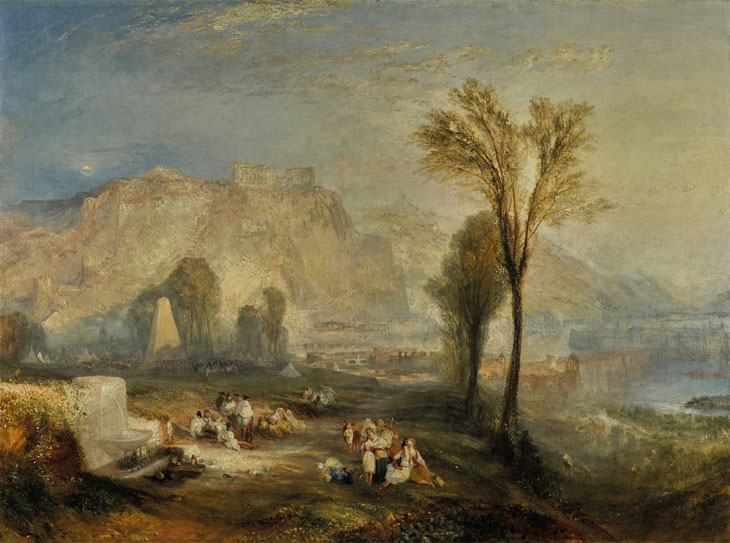
Ehrenbreitstein, or The Bright Stone of Honour and the Tomb of Marceau, from Byron’s Childe Harold (1835), J.M.W. Turner. Sotheby’s London: estimate £15–£25m
Hazy golden light was, of course, Turner’s forte, and never is it more resonant than in these late paintings. The artist revolutionised the painted image, using the techniques of watercolour to build up a pictorial surface with layers of thin, translucent colour as well as by touches of impasted pigment. When this canvas was last seen at auction, in 1965, it fetched a record £88,000. Now, after relatively recent Turner exhibitions in Beijing and Moscow, the auction house is expecting strong international interest for this late work – and for it to realise £15m–£25m on 5 July.
It is townscapes in the form of Venetian vedute rather than landscapes, however, which dominate this season’s Old Master sales. Particularly impressive is the Guardi view of The Rialto Bridge with the Palazzo dei Camerlenghi, which stars in Christie’s London’s 6 July evening sale and is expected to fetch more than £25m. At Sotheby’s London on 5 July, Canaletto’s imposing drawing of The Coronation of the Doge on the Scala dei Giganti takes centre stage. Executed in pen and ink with three shades of grey wash, and heightened with touches of white over black chalk, the latter is one of 10 drawings commissioned for a series of large prints that were found in a bookseller’s in Venice in 1789 by the English nobleman, Richard Hoare. Represented is the coronation of Doge Alvise IV in 1763. It was in an apartment in Alvise’s Palazzo Mocenigo that Byron wrote the final cantos of Childe Harold (estimate £2.5m–£3.5m).
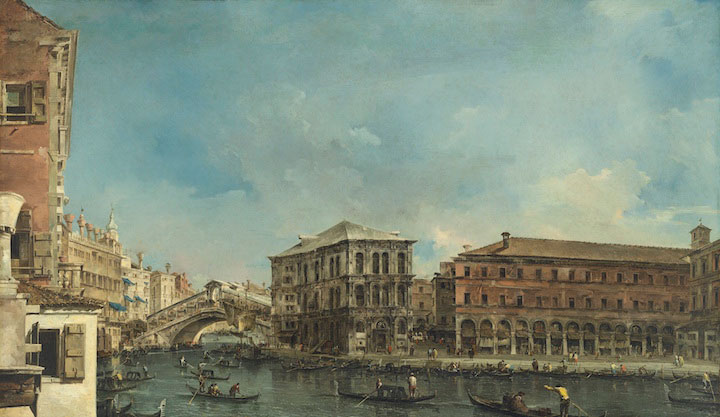
The Rialto Bridge with the Palazzo dei Camerlenghi (mid 1760s), Francesco Guardi. Christie’s London: estimate £25m+
Perhaps the most unusual offering of the season is the collection of panels from Renaissance Tuscan cassoni, or marriage chests, assembled by a European collector over the last 25 years and up at Christie’s London on 6 July. Conveniently, one of them – an illustration of the story of Trajan and the Widow by the artist known as Lo Scheggia – depicts a particularly lavish example being heaved into the marital home on the back of a servant as part of the marriage ceremony (estimate £400,000–£600,00). These richly coloured and highly decorative panel paintings invariably offer appealing secular narratives – it is little wonder that they were so beloved by collectors in the 19th century, which is when most cassone panels were remounted.
One of the eight examples here remains in its later chest, and it records an appropriate if typically far-fetched tale from Boccaccio’s Decameron, in which the virtuous Ginevra is accused of adultery by her husband, Bernabò, after Ambrogiuolo, who wagered he could seduce her, had bribed her servant, hid himself in a cassone in her chamber, and reported back on the mole under her left breast. The story ends with Bernabò berated but forgiven and Ambrogiuolo, on the Sultan’s orders, covered in honey and left in the sun. Giovanni Toscani told the story around 1424 in six scenes on a pair of cassoni – one for the husband, the other for the wife. One is in the National Gallery of Scotland; its pendant, bearing the last three scenes, is expected to fetch £600,000–£900,000.
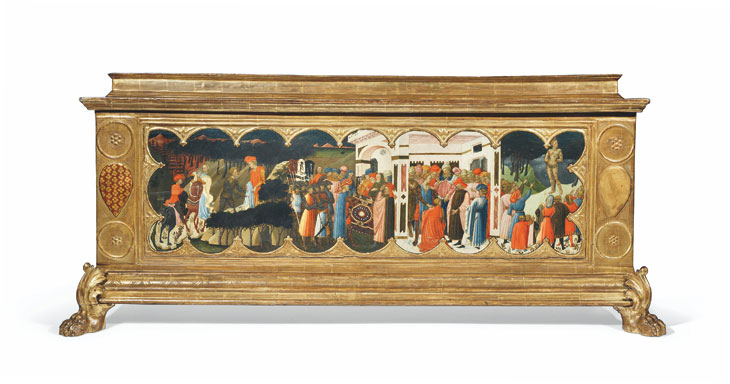
Cassone with a panel by Giovanni Toscani. Christie’s London: estimate £600,000–£900,000
The rediscovery of the season is the pair of beguiling and superbly well-preserved medieval marble lions originally from the tomb of Charles V of France. André Beauneveu was commissioned by the young king in 1364 to execute four family tombs, including Charles’ own which, unlike the others, is believed to have been carved by Beauneveu himself. All the royal tombs in the Abbey of St Denis were dismantled by the Revolutionary government in 1793, and it seems likely that this tomb was rescued by the archaeologist Alexandre Lenoir for his museum of French monuments. The young British antiquary Sir Thomas Neave acquired the lions on his Grand Tour in 1802, and they have remained in his family ever since. The effigy of Charles, meanwhile, was subsequently returned to St Denis. What is exceptional about both the figure and the addorsed lions that once supported his feet is the survival of their original beautifully polished surface. Two pairs of mourners from the tomb of Charles’s brother, Jean, duc de Berry, have also resurfaced in recent years. The marble pair fetched just over €5m in Paris last year. These more important – and certainly more commercial – lions make their auction debut at Christie’s London’s The Exceptional Sale on 6 July, with expectations of £4.5m–£5m.
Sotheby’s London’s 5 July Treasures sale counters with the likes of an enamelled scent flask in the form of a peacock, created by Eugène Feuillâtre for the 1900 Universal Exhibition in Paris. The bird’s elegantly curved neck is enamelled a brilliant blue, his head and crest are silver, and they form the bottle’s cap. Below emerges a body shimmering with blue and green plumage on a guilloche silver ground. Estimate £50,000–£70,000.
From the July/August issue of Apollo. Preview and subscribe here.
Unlimited access from just $16 every 3 months
Subscribe to get unlimited and exclusive access to the top art stories, interviews and exhibition reviews.

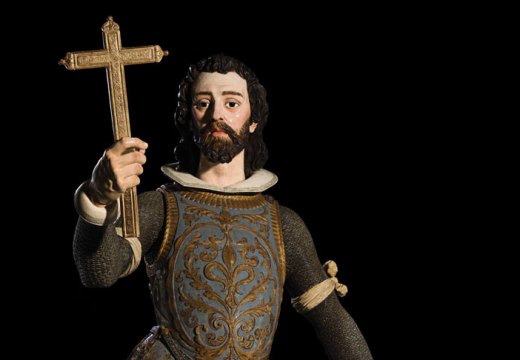
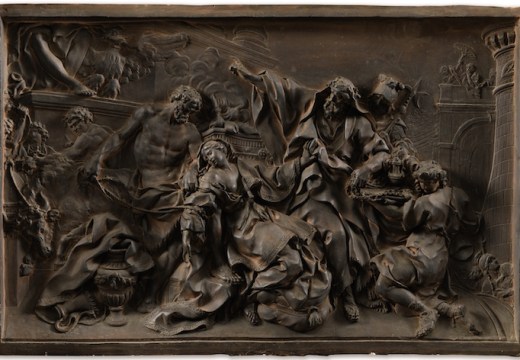










![Masterpiece [Re]discovery 2022. Photo: Ben Fisher Photography, courtesy of Masterpiece London](http://www.apollo-magazine.com/wp-content/uploads/2022/07/MPL2022_4263.jpg)
It’s time for the government of London to return to its rightful home